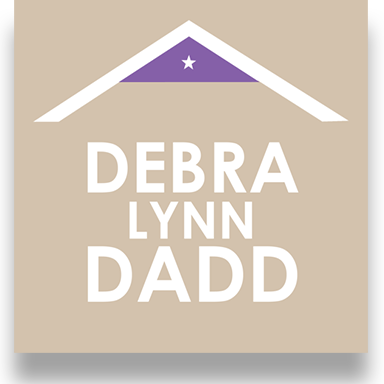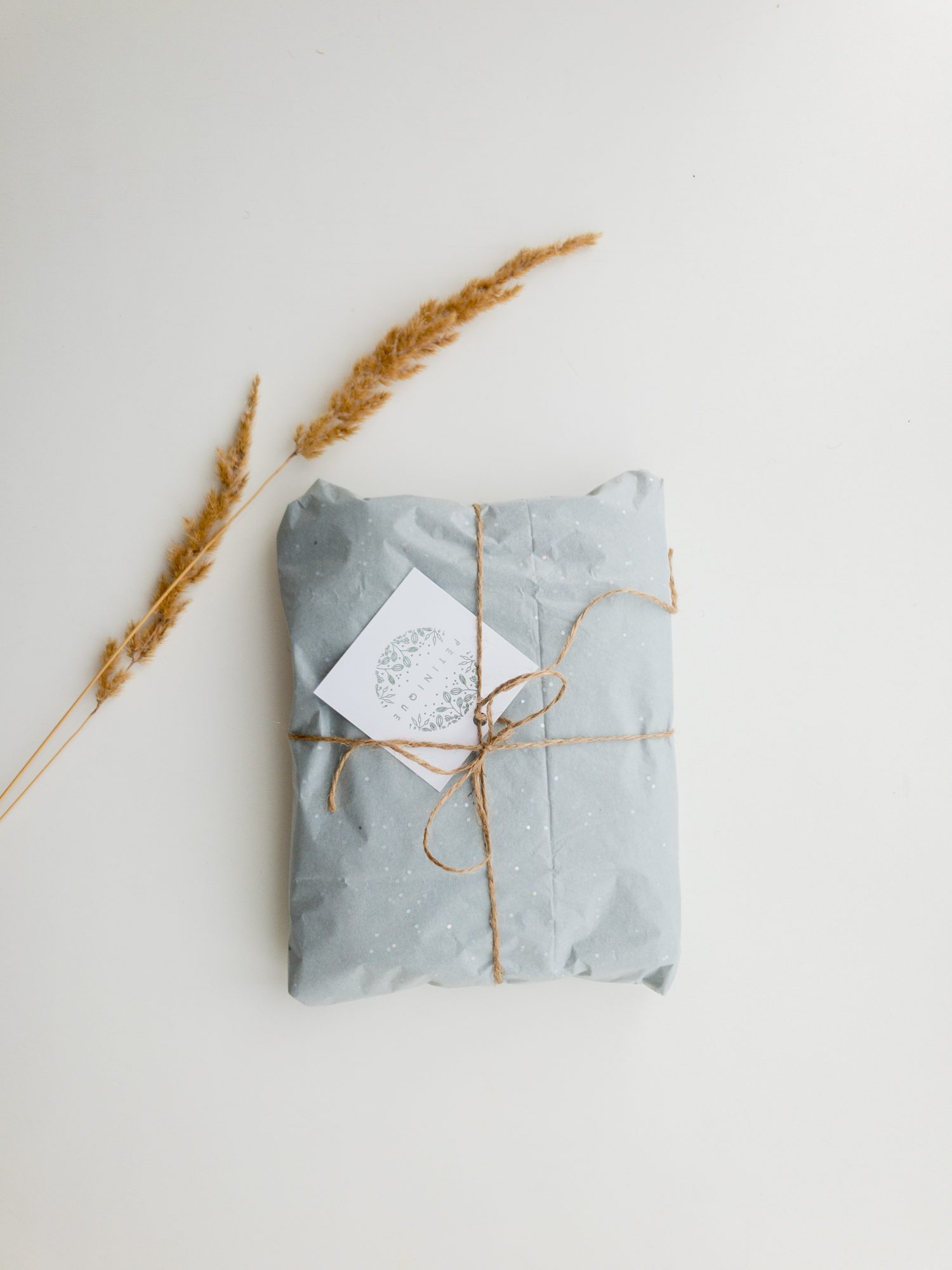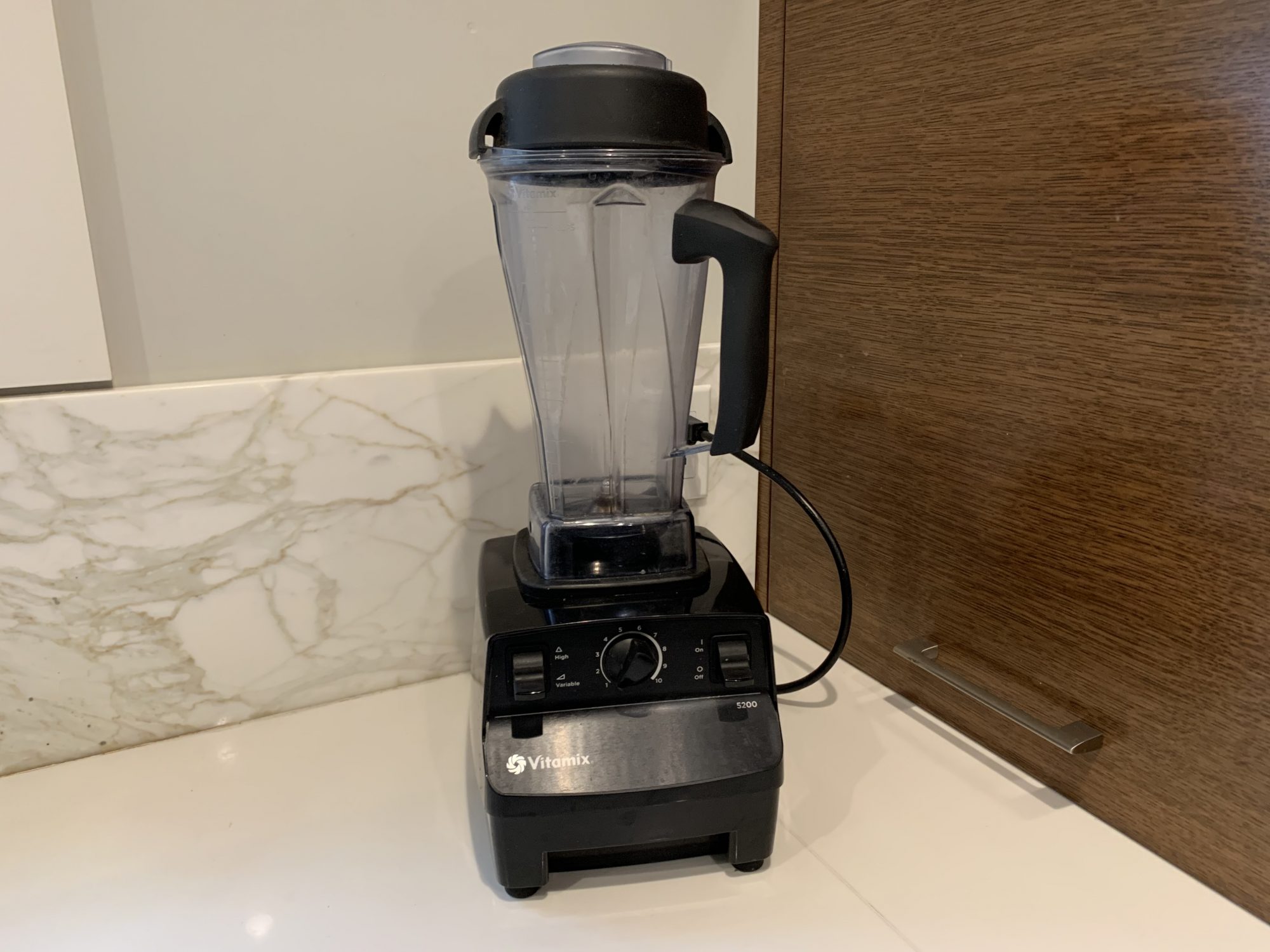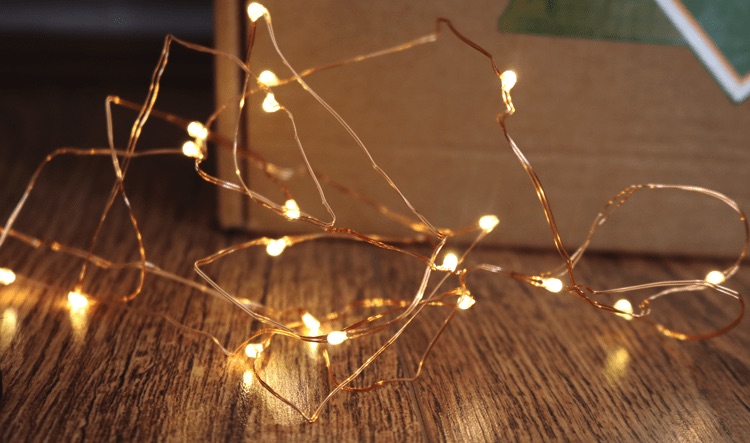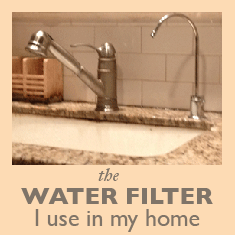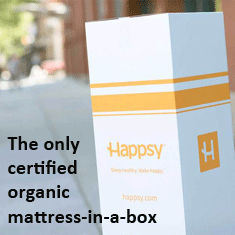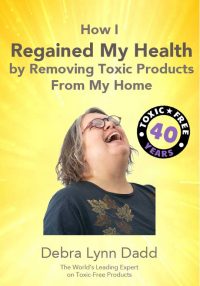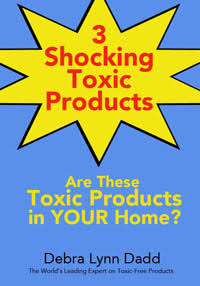
Water | Swimming Pools
Earrings
Question from Sheryl
My daughter got some earings that come with a warning that says this product may expose you to chemicals such as nickle and cyanide which are know in the state of California to cause cancer, etc. Would you be concerned or is this just one of those Prop 65 warnings that has to be labeled?
Lisa’s Answer
2019 Holiday Gift Guide
I’ve put together a list of holiday gift ideas for friends, family, and for yourself. Most of these items are ones I own or plan to buy. Please leave a comment if you have additional ideas to share!
Hostess Gifts/Stocking Stuffers
A great alternative to plastic or stainless steel travel mugs. They are made from tempered glass and have an option for a natural cork band for gripping. The lid is plastic (food-grade polypropylene and polyethylene) but the beverage only passes quickly through that part.
Use these in place of fabric softeners and dryer sheets. Made from 100% New Zealand wool and free of chemicals. Trader Joe’s also sells a version of these.
These wraps come in a variety of sizes. They are made with GOTS organic cotton and dipped in beeswax, jojoba oil and tree resin. They are a great alternative to plastic wrap and bags. Trader Joe’s also sell a version of these and they also have beeswax bags.
This company makes premium cutting boards and cooking utensils from solid, untreated maple. They don’t use any glues or chemicals. Even the feet on the cutting boards are made from natural rubber. These are built to last!
Kleen Kanteen Tumbler with Straw
Unless you have a nickel sensitivity, stainless steel is a good choice for drinking water. Kleen Kanteen has been a favorite of mine but I’ve long wished for a non-plastic cap that doesn’t need to be unscrewed so I can use it while cycling. This fits the bill and can be used for hot as well as cold beverages. I will remove the silicone tip since I will only be using it for cold water.
For the Home and Car
This is a new, smaller version of the powerful Molekule Air Purifier. It’s made for rooms up to 250 square feet, so it’s perfect for a small bedroom or office. The mini version is made of a medical grade polycarbonate unlike the full-size version which is made of aluminum. If you are particularly sensitive this might not work for you. It’s currently is on sale for $319.
A mini version of the IQAir Purifer designed for your car. Research shows that over 275 chemicals can be present in your car at any given time. This powerful unit removes 99% of particle pollutants and adsorbs odor and gas molecules.
A beautiful selection of chemical-free rugs. These rugs are made of wool or cotton, with no backing. A few of the rugs have no dyes and those that are dyed use natural vegetable and animal dyes. There are no post-production chemicals used. Please note, they also sell a few animal skin rugs. I don’t recommend animal skin rugs in general because of the many chemicals used in the tanning process.
This is a one-piece poor-over coffee maker, made of heat-resistant glass. Use it with Chemex unbleached filters.
A beautiful selection of FDA food-grade silicone placemats. I don’t recommend cooking with silicone products because there is evidence that they may leach at high temperatures. As a placemat, the material is safe to use. They are easy to clean and last for years. They have a 20% off sale for the holidays.
For Her
These are the most comfortable GOTS certified, organic cotton pajamas that I have ever owned.
I gave up using fragrances years ago because of the lack of transparency around their chemical ingredients. This is the first EWG Verified fragrance. While they do use synthetic ingredients, they are fully transparent about what they use. The scents are sophisticated and on par with high-end products. They sell a sample pack for $20. This is probably not appropriate for those with chemical sensitivities but perfect for someone who wants a safer alternative to traditional fragrances.
For Him
My husband is getting two of these because he is always leaving things behind on airplanes. This is the first travel pillow I have found that is made with GOLS certified latex and an organic cotton cover.
These are super comfortable house shoes made from felted wool. You can add a soft, felted insert for extra comfort and support. The soles are synthetic with a silicone grip but, overall, they are a much more natural choice than conventional slippers.
For the Kids
This is a unique selection of classic toys such as dolls, dollhouses, trucks, and crafts made from natural materials. They are pricey, but one-of-a kind.
These natural, vegan paints are made from earth and mineral pigments. They can be mixed with oil (we use walnut oil) and are surprisingly easy to use.
I haven’t included any items for teens, which reflects the fact that my two teenagers and I are at a stalemate when it comes to holiday gifts. They don’t want anything that I want to buy and I don’t want to buy anything they want. I don’t expect we will reach any common ground but I’ll keep you posted if we come up with any great compromises.
Pull-Down Kitchen Faucet Sprayer Replacement
Question from Miriam
Whew, that was a long title! We need to replace ours, as the part that pulls down has sprung a leak. What ought one look for in this type of purchase? It seems important as it will be in contact with our water.
I’ve found a few on Amazon that look decent – do these seem ok?
Lisa’s Answer
Living Near Power Lines
Question from Stacey
We are currently looking to move to a new twin and have found two possible houses. The house that is closer to school and more convenient is situated near large power/transmission lines ( approx. .25 mile away). I’ve called the town for more information, but since I do not own the house, they will only tell me that the wood poles will be converted to metal. What is your recommendation on living near power lines such as these? I’m not sure what else to do…
Lisa’s Answer
Fiesta Dinnerware
Question from TG
Is Fiestaware (claim to have glazes free from lead and cadmium) safe to use in any color? Historically, their famous red Fiestaware had uranium from the ’30’s to the ’50’s. They are manufactured here in the USA and are beautiful.
Lisa’s Answer
Xtrema Cookware
Update July, 2020:
Read more about Xtrema and more in The Ultimate Guide to Non-Toxic Cookware
New Tire Odor
Question from CMP
I never thought about it until after the fact…got 4 new tires put on my SUV today & the smell of them & in the inside of my vehicle is now intolerable. I have MCS, multiple allergies (including latex) & asthma. Does anyone have any suggestions as to what to do? I use many of the EnviroKlenz products & was wondering if washing the tires with their product might help? I’d appreciate any help.
Lisa’s Answer
Non-Toxic Art and Framing
When I moved into my new, non-toxic home I was very careful about which furnishings to bring with me. It didn’t make senses to invest so much time, effort and money into building a clean home only to fill it with items that could off-gas or leach harmful chemicals. Most of our old furniture was safe because I had made a house rule years before that any new furnishing must to be fully vetted for safety. One category I had not given much thought to was wall art; the pictures, paintings and other wall décor that help to make a house feel like a home! As we settled into our new house, our walls remained white and bare. I knew I had to do a deep dive on the topic.
Paintings: Acrylic vs. Oil
My husband and I love art and we hated the idea of not being able to display our favorite pieces. We have some oil paintings and I recalled reading that oil paint was more toxic than acrylic paint because acrylic paint is water-based. My research indicated it’s not that simple.
Oil paintings use a pigment for color and a vehicle that holds the pigment in suspension. Some pigments, such as cobalt and cadmium are toxic but only if you ingest them or breathe particles. A painter who works directly with pigment needs to take precautions, but pigments do not offgas and should not pose an issue hanging on your wall. The vehicle used in oil painting is a highly refined vegetable oil such as flax, safflower, poppy or walnut. If used alone these would not release chemicals into the air. What makes oil paintings potentially toxic is the use of solvents, such as turpentine or mineral spirits, to thin the paint or clean up brushes. Fortunately, artists are being educated about the health implications of the materials they use. Read more about artist materials here.
I contacted the artist of one of our paintings and was pleased to learn that he was very careful to use materials with very low toxicity. If you own oil paintings and are unable to determine the materials used, be assured that most off-gassing should occur within the first 2 to 3 months.
Acrylic paint uses the same pigment as oil paint but its vehicle and binder, which holds the pigment together, is plastic. When the painting dries components of the vehicle can offgas. Because acrylic paints are water based, they may also contain formaldehyde as a preservative. Even if you don’t know what materials were used in the painting, it is safe to assume that, like oil painting, most off-gassing should occur within the first 2 to 3 months. Formaldehyde, however, can offgass continuously. It is likely in small amounts but if you are sensitive to formaldehyde you might want to avoid acrylic paintings.
Pictures and Picture frames
Inks used to make posters and prints have toxins. Even water-based, eco-friendly inks have some toxins. Have you ever gotten a catalog in the mail, particularly a high quality one, that smells like it just rolled off the printer? That smell is off-gassing VOCs.
My kids like to decorate with posters, but it is very difficult to get enough information on a commercially produced poster to determine which chemicals are used in their materials and processes. While I’d prefer my kids don’t have posters in their bedrooms, I figured out a compromise to at least limit the VOCs. I buy an uncoated aluminum metal frame and have a local framing store cut a piece of glass to fit. Instead of foam board which is used in 90% of framing jobs, I use plain corrugated cardboard. I found a store that sells target practice supplies (go figure!) that carries many sizes of precut, unprinted cardboard. If you are concerned about adhesives used in cardboard production, you could cover it with a piece of plain kraft paper. Then, to further seal the enclosure I tape the edges with an aluminum foil tape to block fumes from the adhesive and any lingering VOCs from the poster.
Finding frames for your pictures and prints can also be a challenge. Metal frames or solid wood frames are best but if you have frames that you are not sure about you could seal them with a product like AFM Safecoat Hard Seal, which seals any off-gassing. If you are looking for solid wood frames, read more here. Etsy might be a good place to try and you could request that the artisan use low or zero VOC adhesives and stains.
Thinking Out-of-the Box
Fiber art is becoming more popular and widely available. Wall hangings made with natural fibers are prevalent on Etsy and might be found at local craft fairs. Search for macrame wall hangings, woven wall hangings or tapestries. Look for ones made with organic cotton, hemp or wool and hung on untreated wood.
If you are artistic, you can make your own art using natural art supplies. Learn more about them here.
https://www.debralynndadd.com/toxicfreetalkradio/natural-art-supplies/#transcript1 My daughter paints with these and finds them easy to use.
More About Blenders
Last week I wrote about PTFE as an ingredient in the seal at the bottom of Vitamix containers. I want to reframe this discussion because this is not an issue about one brand. I have researched further and found that other blenders, high-speed, professional-grade blenders in particular, also contain PTFE. And some that do not use it will not disclose what they use in its place to keep the containers water-tight.
I also want to make sure it’s understood that there is no regulation that prohibits PTFE use in consumer products including those that come in contact with food. Manufacturers are free to use it. It is a matter of choice whether consumers WANT it in their products.
What is PTFE and is it Safe?
PTFE is one of 3000 poly- and perfluoroalkyl substances (PFAS) used in consumer products. PFAS chemicals are known as “forever chemicals” because they are persistent in the environment and in our bodies. Most people looking to avoid toxins choose not to use non-stick pots and pans because the PTFE-containing coating, when heated, can release fumes that coat the lungs and can cause fluoropolymer fever, also known as Teflon flu. PFOA, another PFAS chemical, used to be used to manufacture PTFE and was sometimes found as a contaminant in products made with the chemical. PFOA is considered a toxic substance by the EPA and has been linked to adverse effects including cancer, birth defects and liver damage. Fortunately, most reputable companies no longer manufacture PTFE using PFOA.
So, is PTFE harmful even when it is not heated and when it is not contaminated with PFOA?
Some health experts contend that the chemical is safe because it is inert and will pass through the body without harm. According to the Environmental Working Group (EWG), PTFE is considered a moderate health concern because it hasn’t been studied and there is no evidence that the PFAS chemicals that have replaced PFOAs are much safer. There is no direct evidence that PTFE coming in contact with food is harmful, but there is also no conclusive evidence that it is free of harm.
Which Blenders Contain PTFE?
The following blenders use PTFE in the seal at the bottom of the container:
- Vitamix
- Blendtec
- Ninja
The following blenders do NOT contain PTFE:
- KitchenAid: There is no PTFE in any KitchenAid product.
- Breville
- Cuisinart
Are Blenders with PTFE Safe to Use?
It is important to understand whether or not the PTFE migrates into the food and unfortunately, I can’t answer that. All other things being equal, I personally would choose a blender without the chemical as a precautionary measure. However, I don’t plan to stop using my Vitamix because of the health benefits from the smoothies I use it to make. I do hope that companies, particularly those that sell the promise of better health, will look beyond regulatory compliance and seek materials that are proven to be safe for consumers.
